Towards Increasing Hosting Capacity of Modern Power Systems through Generation and Transmission Expansion Planning
Abstract
:1. Introduction
1.1. Background and Motivation
1.2. Literature Review
1.3. Novelty and Contribution
- HC planning model, which increases the host of RSESs and meets the future load demands, is proposed.
- The objective function is investigated to be more concerned with facilities’ size and quantity than the investment cost. It is formulated to determine the size of the thermal units that can be replaced to reduce environmental pollution. In addition, it targets to find the optimal TEP projects and FCLs and ESSs’ place and size to increase the HC level and guarantee the SCC and N-1 constraints without needing load shedding.
- A load forecasting technique based on adaptive neural fuzzy systems (ANFIS) is applied to predict the expected load growth.
2. Problem Formulation
2.1. Objective Function (OF)
2.2. Problem Constraints
2.2.1. Normal Operation Constraints
2.2.2. Congestion Relief Constraints
2.3. Economic Analysis
3. Methodology
3.1. Load Forecasting
3.2. Optimization Methods
- Step 1:
- The initial population is randomly generated considering the lower and upper bounds of the decision-making variables.
- Step 2:
- The population is divided into two groups. The first group contains the first half of the population, and the new variables are obtained using INFO’s updating scheme provided in (26)–(29). The updating scheme is carried out in three stages: updating rule, vector combining, and a local search. The first stage enhances the diversity of the population during the search procedure, as illustrated in (26) and (27).
- Step 3:
- The second group comprises the second half of the population, and the SCA is employed to update the decision-making variables. The SCA’s updating scheme is explained in (30) and (31).
- Step 4:
- After each iteration, the objective functions are calculated after the new variables in each group are obtained. If the candidate solutions do not meet the operating constraints, a high penalized value is added to the objective functions.
- Step 5:
- The solution, corresponding to the minimum fitness value in both groups, is regarded as the best solution, and in the next iteration, is used to calculate the new variables in the groups.
4. Numerical Results
4.1. Test Systems
4.2. EHVN’s Expansion
4.2.1. Load Forecasting for EHVN
4.2.2. Configuration of EHVN in the Year 2040
4.2.3. Impact of and on Expansion Projects
4.3. IEEE 24-Bus System’s Expansion
Final Configuration of the 24-Bus System
4.4. LCOE Analysis
4.5. Testing the Performance of the INFO-SCA
5. Conclusions
Author Contributions
Funding
Institutional Review Board Statement
Informed Consent Statement
Data Availability Statement
Conflicts of Interest
Nomenclature
| EHVN | Egyptian extra high voltage network |
| ESS | Energy storage system |
| EV | Electric vehicle |
| FCL | Fault current limiter |
| GEP | Generation expansion planning |
| HC | Hosting capacity |
| INFO | Weighted mean of vectors optimizer |
| PSP | Power system planning |
| SCA | Sine and cosine algorithm |
| SOC | State of charge |
| RSESs | Renewable and sustainable energy sources |
| TCSCs | Thyristor-controlled series compensators |
| TEP | Transmission expansion planning |
| Susceptance of the route between bus i and j | |
| Cost of circuits installed between bus i and bus j | |
| Maximum depth of discharge | |
| Number of batteries installed at scenario S, and maximum number of batteries can be installed at bus i | |
| Number of generation units at bus i and scenario S | |
| OF | Objective function |
| Output active power in MW of thermal unit and RSES at scenario S, respectively | |
| Active power consumed by the load at bus i (MW) | |
| Charging and discharging power of an ESS at bus i (MW) | |
| , | Active power and maximum rated of power flow in a route between bus i and j (MW) |
| Rated power of the selected ESS | |
| Load shedding in MW | |
| SOC of ESS at bus i and scenario S | |
| Voltage angle at bus i (p.u) | |
| Charging and discharging efficiencies of ESS | |
| λ, y | Discount rate and the lifetime of the project |
References
- International Energy Outlook 2021-U.S. Energy Information Administration (EIA). Available online: https://www.eia.gov/outlooks/ieo/ (accessed on 31 January 2022).
- Sinsel, S.R.; Riemke, R.L.; Hoffmann, V.H. Challenges and solution technologies for the integration of variable renewable energy sources—A review. Renew. Energy 2020, 145, 2271–2285. [Google Scholar] [CrossRef]
- Refaat, M.M.; Abdel Aleem, S.H.E.; Atia, Y.; Ali, Z.M.; El-Shahat, A.; Sayed, M.M. A mathematical approach to simultaneously plan generation and transmission expansion based on fault current limiters and reliability constraints. Mathematics 2021, 9, 2771. [Google Scholar] [CrossRef]
- Ismael, S.M.; Abdel Aleem, S.H.E.; Abdelaziz, A.Y.; Zobaa, A.F. State-of-the-art of hosting capacity in modern power systems with distributed generation. Renew. Energy 2019, 130, 1002–1020. [Google Scholar] [CrossRef]
- Rabiee, A.; Mohseni-bonab, S.M. Maximizing hosting capacity of renewable energy sources in distribution networks: A multi-objective and scenario-based approach. Energy 2017, 120, 417–430. [Google Scholar] [CrossRef]
- Santos, S.F.; Fitiwi, D.Z.; Shafie-Khah, M.; Bizuayehu, A.W.; Cabrita, C.M.P.; Catalão, J.P.S. New multi-stage and stochastic mathematical model for maximizing RES hosting capacity—Part I: Problem formulation. IEEE Trans. Sustain. Energy 2016, 8, 304–319. [Google Scholar] [CrossRef]
- Santos, F.; Fitiwi, D.Z.; Member, S.; Shafie-khah, M.; Bizuayehu, A.W.; Cabrita, C.M.P.; Catal, P.S. New Multi-Stage and Stochastic Mathematical Model for Maximizing RES Hosting Capacity—Part II: Numerical Results. IEEE Trans. Sustain. Energy 2017, 8, 320–330. [Google Scholar] [CrossRef]
- Bletterie, B.; Le Baut, J.; Kadam, S.; Bolgaryn, R.; Abart, A. Hosting Capacity of LV Networks with Extended Voltage Band. In Proceedings of the Proceedings—2015 International Symposium on Smart Electric Distribution Systems and Technologies (EDST), Vienna, Austria, 8–11 September 2015; IEEE: Washington, DC, USA, 2015; pp. 531–536. [Google Scholar]
- Etherden, N.; Bollen, M.H.J. Increasing the hosting capacity of distribution networks by curtailment of renewable energy resources. In Proceedings of the 2011 IEEE Trondheim PowerTech, Trondheim, Norway, 19–23 June 2011; IEEE: Washington, DC, USA, 2011; pp. 1–7. [Google Scholar]
- Etherden, N.; Bollen, M.H.J. Dimensioning of energy storage for increased integration of wind power. IEEE Trans. Sustain. Energy 2013, 4, 546–553. [Google Scholar] [CrossRef]
- Navarro-Espinosa, A.; Ochoa, L.F. Increasing the PV hosting capacity of Lv networks: OLTC-fitted transformers vs. reinforcements. In Proceedings of the 2015 IEEE Power and Energy Society Innovative Smart Grid Technologies Conference, ISGT 2015, Washington, DC, USA, 18–20 February 2015. [Google Scholar]
- Sakar, S.; Balci, M.E.; Abdel, S.H.E.; Zobaa, A.F. Integration of large- scale PV plants in non-sinusoidal environments: Considerations on hosting capacity and harmonic distortion limits. Renew. Sustain. Energy Rev. 2018, 82, 176–186. [Google Scholar] [CrossRef] [Green Version]
- Gacitua, L.; Gallegos, P.; Henriquez-Auba, R.; Lorca; Negrete-Pincetic, M.; Olivares, D.; Valenzuela, A.; Wenzel, G. A comprehensive review on expansion planning: Models and tools for energy policy analysis. Renew. Sustain. Energy Rev. 2018, 98, 346–360. [Google Scholar] [CrossRef]
- Mahdavi, M.; Sabillon Antunez, C.; Ajalli, M.; Romero, R. Transmission Expansion Planning: Literature Review and Classification. IEEE Syst. J. 2019, 13, 3129–3140. [Google Scholar] [CrossRef]
- Gomes, P.V.; Saraiva, J.T. State-of-the-art of transmission expansion planning: A survey from restructuring to renewable and distributed electricity markets. Int. J. Electr. Power Energy Syst. 2019, 111, 411–424. [Google Scholar] [CrossRef]
- Refaat, M.M.; Aleem, S.H.E.A.; Atia, Y.; Ali, Z.M.; Sayed, M.M. AC and DC Transmission Line Expansion Planning Using Coronavirus Herd Immunity Optimizer. In Proceedings of the 2021 22nd International Middle East Power Systems Conference (MEPCON), Assiut, Egypt, 14–16 December 2021; pp. 313–318. [Google Scholar]
- Refaat, M.M.; Aleem, S.H.E.A.; Atia, Y.; Ali, Z.M.; Sayed, M.M. Multi-stage dynamic transmission network expansion planning using lshade-spacma. Appl. Sci. 2021, 11, 2155. [Google Scholar] [CrossRef]
- Alhamrouni, I.; Khairuddin, A.; Ferdavani, A.K.; Salem, M. Transmission expansion planning using AC-based differential evolution algorithm. IET Gener. Transm. Distrib. 2014, 8, 1637–1644. [Google Scholar] [CrossRef]
- Luburić, Z.; Pandžić, H.; Carrión, M. Transmission expansion planning model considering battery energy storage, TCSC and LINEs using AC OpF. IEEE Access 2020, 8, 203429–203439. [Google Scholar] [CrossRef]
- Hamidpour, H.; Aghaei, J.; Pirouzi, S.; Dehghan, S.; Niknam, T. Flexible, reliable, and renewable power system resource expansion planning considering energy storage systems and demand response programs. IET Renew. Power Gener. 2019, 13, 1862–1872. [Google Scholar] [CrossRef]
- Esmaili, M.; Ghamsari-Yazdel, M.; Amjady, N.; Chung, C.Y.; Conejo, A.J. Transmission Expansion Planning including TCSCs and SFCLs: A MINLP Approach. IEEE Trans. Power Syst. 2020, 35, 4396–4407. [Google Scholar] [CrossRef]
- Gan, W.; Ai, X.; Fang, J.; Yan, M.; Yao, W.; Zuo, W.; Wen, J. Security constrained co-planning of transmission expansion and energy storage. Appl. Energy 2019, 239, 383–394. [Google Scholar] [CrossRef]
- Romero, R.; Rocha, C.; Mantovani, M.; Mantovani, J.R.S. Analysis of heuristic algorithms for the transportation model in static and multi-stage planning in network expansion systems. IEE Proc.-Gener. Transm. Distrib. 2003, 150, 521–526. [Google Scholar] [CrossRef]
- Silva Sousa, A.; Asada, E.N. Combined heuristic with fuzzy system to transmission system expansion planning. Electr. Power Syst. Res. 2011, 81, 123–128. [Google Scholar] [CrossRef]
- Shayeghi, H.; Mahdavi, M.; Bagheri, A. Discrete PSO algorithm based optimization of transmission lines loading in TNEP problem. Energy Convers. Manag. 2010, 51, 112–121. [Google Scholar] [CrossRef]
- Shayeghi, H.; Mahdavi, M.; Bagheri, A. An improved DPSO with mutation based on similarity algorithm for optimization of transmission lines loading. Energy Convers. Manag. 2010, 51, 2715–2723. [Google Scholar] [CrossRef]
- Fathy, A.A.; Elbages, M.S.; El-Sehiemy, R.A.; Bendary, F.M. Static transmission expansion planning for realistic networks in Egypt. Electr. Power Syst. Res. 2017, 151, 404–418. [Google Scholar] [CrossRef]
- Leite Da Silva, A.M.; Rezende, L.S.; Da Fonseca Manso, L.A.; De Resende, L.C. Reliability worth applied to transmission expansion planning based on ant colony system. Int. J. Electr. Power Energy Syst. 2010, 32, 1077–1084. [Google Scholar] [CrossRef]
- Eslami, M.; Neshat, M.; Khalid, S.A. A Novel Hybrid Sine Cosine Algorithm and Pattern Search for Optimal Coordination of Power System Damping Controllers. Sustainability 2022, 14, 541. [Google Scholar] [CrossRef]
- Neshat, M.; Mirjalili, S.; Sergiienko, N.Y.; Esmaeilzadeh, S.; Amini, E.; Heydari, A.; Garcia, D.A. Layout optimisation of offshore wave energy converters using a novel multi-swarm cooperative algorithm with backtracking strategy: A case study from coasts of Australia. Energy 2022, 239, 122463. [Google Scholar] [CrossRef]
- Chen, K.; Zhou, F.; Yin, L.; Wang, S.; Wang, Y.; Wan, F. A hybrid particle swarm optimizer with sine cosine acceleration coefficients. Inf. Sci. Ny. 2018, 422, 218–241. [Google Scholar] [CrossRef]
- Najjar, M.; Falaghi, H. Wind-integrated simultaneous generation and transmission expansion planning considering short-circuit level constraint. IET Gener. Transm. Distrib. 2019, 13, 2808–2818. [Google Scholar] [CrossRef]
- Moradi-Sepahvand, M.; Amraee, T. Hybrid AC/DC Transmission Expansion Planning Considering HVAC to HVDC Conversion under Renewable Penetration. IEEE Trans. Power Syst. 2021, 36, 579–591. [Google Scholar] [CrossRef]
- Naderi, E.; Pourakbari-Kasmaei, M.; Lehtonen, M. Transmission expansion planning integrated with wind farms: A review, comparative study, and a novel profound search approach. Int. J. Electr. Power Energy Syst. 2020, 115, 105460. [Google Scholar] [CrossRef]
- Mazaheri, H.; Ranjbar, H.; Saber, H.; Moeini-Aghtaie, M. Expansion planning of transmission networks. In Uncertainties in Modern Power Systems; Academic Press: Cambridge, MA, USA, 2021; pp. 35–56. [Google Scholar]
- Ramirez, J.M.; Hernandez-Tolentino, A.; Marmolejo-Saucedo, J.A. A stochastic robust approach to deal with the generation and transmission expansion planning problem embedding renewable sources. In Uncertainties in Modern Power Systems; Academic Press: Cambridge, MA, USA, 2021; pp. 57–91. [Google Scholar]
- Zhou, Y.; Zhai, Q.; Yuan, W.; Wu, J. Capacity expansion planning for wind power and energy storage considering hourly robust transmission constrained unit commitment. Appl. Energy 2021, 302, 117570. [Google Scholar] [CrossRef]
- Abushamah, H.A.S.; Haghifam, M.R.; Bolandi, T.G. A novel approach for distributed generation expansion planning considering its added value compared with centralized generation expansion. Sustain. Energy Grids Netw. 2021, 25, 100417. [Google Scholar] [CrossRef]
- Zhang, H.; Cheng, H.; Liu, L.; Zhang, S.; Zhou, Q.; Jiang, L. Coordination of generation, transmission and reactive power sources expansion planning with high penetration of wind power. Int. J. Electr. Power Energy Syst. 2019, 108, 191–203. [Google Scholar] [CrossRef]
- Mortaz, E.; Valenzuela, J. Evaluating the impact of renewable generation on transmission expansion planning. Electr. Power Syst. Res. 2019, 169, 35–44. [Google Scholar] [CrossRef]
- Zhuo, Z.; Du, E.; Zhang, N.; Kang, C.; Xia, Q.; Wang, Z. Incorporating Massive Scenarios in Transmission Expansion Planning with High Renewable Energy Penetration. IEEE Trans. Power Syst. 2020, 35, 1061–1074. [Google Scholar] [CrossRef]
- Akhavizadegan, F.; Wang, L.; McCalley, J. Scenario selection for iterative stochastic transmission expansion planning. Energies 2020, 13, 1203. [Google Scholar] [CrossRef] [Green Version]
- Ahmadianfar, I.; Asghar Heidari, A.; Noshadian, S.; Chen, H.; Gandomi, A.H. INFO: An Efficient Optimization Algorithm based on Weighted Mean of Vectors. Expert Syst. Appl. 2022, 195, 116516. [Google Scholar] [CrossRef]
- Mirjalili, S. SCA: A Sine Cosine Algorithm for solving optimization problems. Knowl.-Based Syst. 2016, 96, 120–133. [Google Scholar] [CrossRef]
- Biswas, P.P.; Suganthan, P.N.; Mallipeddi, R.; Amaratunga, G.A.J. Optimal reactive power dispatch with uncertainties in load demand and renewable energy sources adopting scenario-based approach. Appl. Soft Comput. J. 2019, 75, 616–632. [Google Scholar] [CrossRef]
- Kamdar, I.; Ali, S.; Taweekun, J.; Ali, H.M. Wind Farm Site Selection Using WAsP Tool for Application in the Tropical Region. Sustainability 2021, 13, 13718. [Google Scholar] [CrossRef]
- Mostafa, M.H.; Abdel Aleem, S.H.E.; Ali, S.G.; Ali, Z.M.; Abdelaziz, A.Y. Techno-economic assessment of energy storage systems using annualized life cycle cost of storage (LCCOS) and levelized cost of energy (LCOE) metrics. J. Energy Storage 2020, 29, 101345. [Google Scholar] [CrossRef]
- Akdemir, B.; Çetinkaya, N. Long-term load forecasting based on adaptive neural fuzzy inference system using real energy data. Energy Procedia 2012, 14, 794–799. [Google Scholar] [CrossRef] [Green Version]
- Şahin, M.; Erol, R. A Comparative Study of Neural Networks and ANFIS for Forecasting Attendance Rate of Soccer Games. Math. Comput. Appl. 2017, 22, 43. [Google Scholar] [CrossRef] [Green Version]
- Renewables.ninja. Available online: https://www.renewables.ninja/ (accessed on 31 January 2022).
- Egyptian Electricity Holding Company Annual Reports. Available online: http://www.moee.gov.eg/english_new/report.aspx (accessed on 31 January 2022).
- Zhang, H.; Heydt, G.T.; Vittal, V.; Mittelmann, H.D. Transmission expansion planning using an AC model: Formulations and possible relaxations. In Proceedings of the 2012 IEEE Power and Energy Society General Meeting, San Diego, CA, USA, 22–26 July 2012; IEEE: Washington, DC, USA, 2012; pp. 1–8. [Google Scholar]
- Saboori, H.; Hemmati, R. Considering carbon capture and storage in electricity generation expansion planning. IEEE Trans. Sustain. Energy 2016, 7, 1371–1378. [Google Scholar] [CrossRef]
- Al-Betar, M.A.; Alyasseri, Z.A.A.; Awadallah, M.A.; Abu Doush, I. Coronavirus Herd Immunity Optimizer (CHIO); Springer: London, UK, 2021; Volume 33, ISBN 0123456789. [Google Scholar]
- Houssein, E.H.; Saad, M.R.; Hashim, F.A.; Shaban, H.; Hassaballah, M. Lévy flight distribution: A new metaheuristic algorithm for solving engineering optimization problems. Eng. Appl. Artif. Intell. 2020, 94, 103731. [Google Scholar] [CrossRef]
- Zobaa, A.F.; Aleem, S.H.E.A.; Abdelaziz, A.Y. Classical and Recent Aspects of Power System Optimization; Academic Press: Cambridge, MA, USA; Elsevier: Amsterdam, The Netherlands, 2018; ISBN 9780128124413. [Google Scholar]
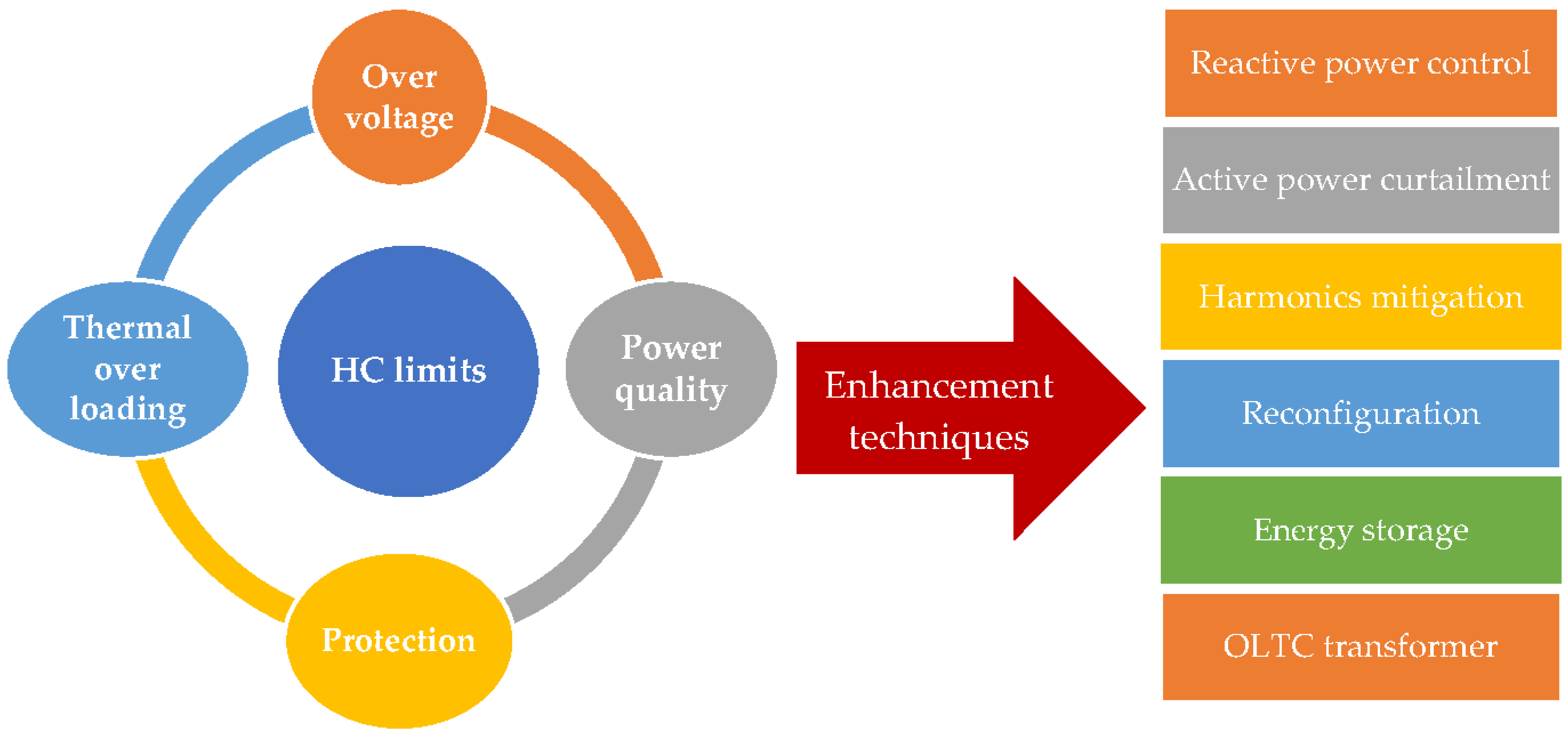


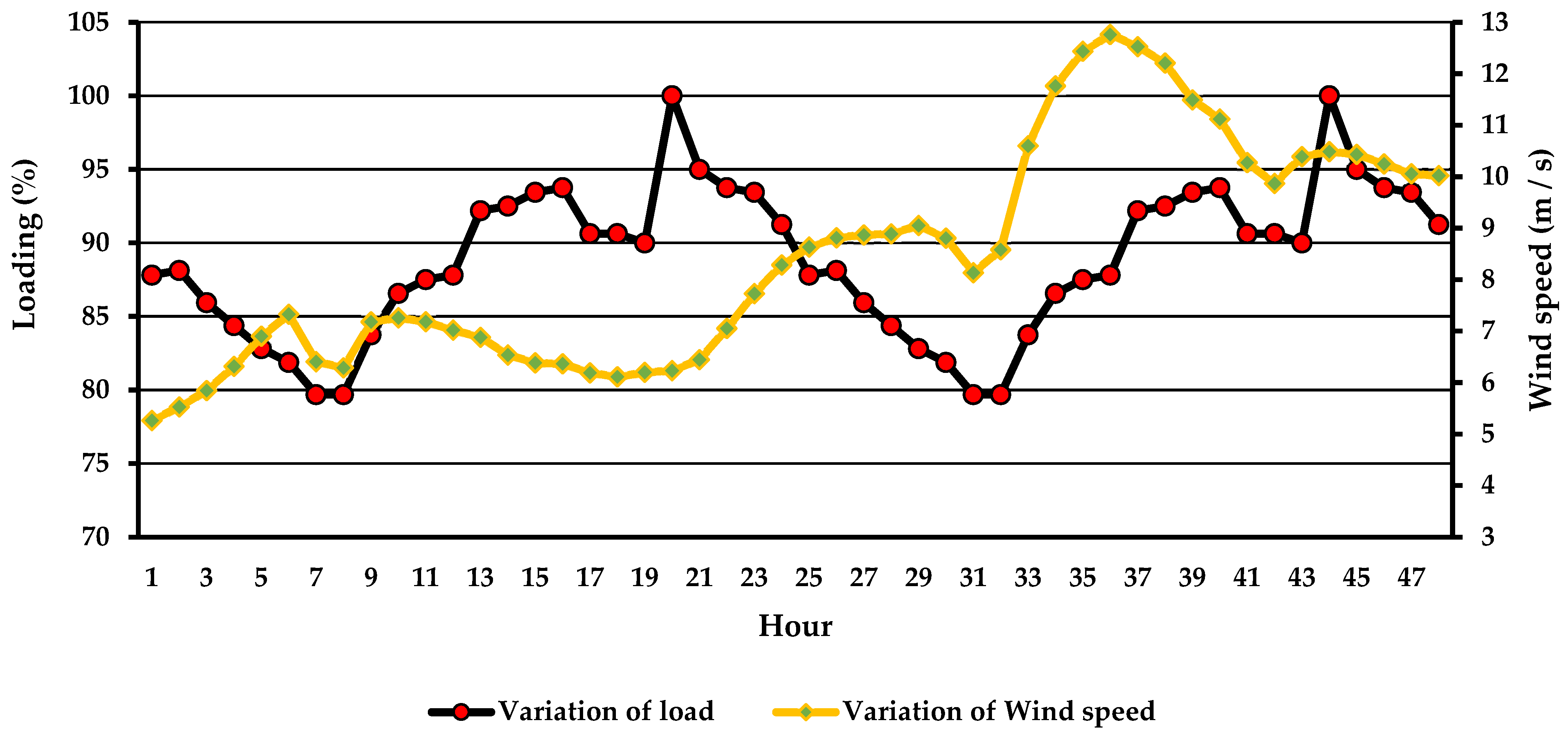
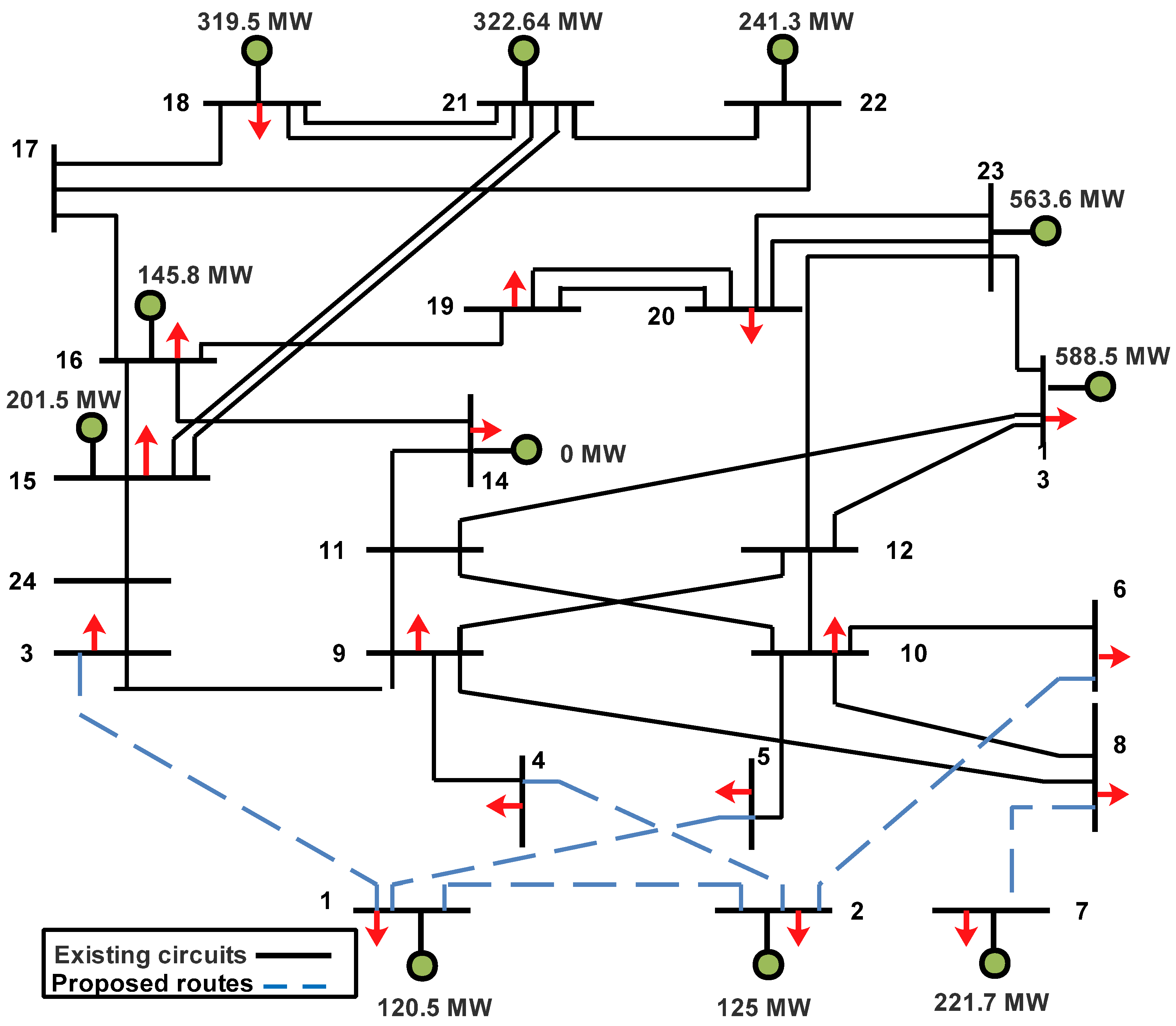
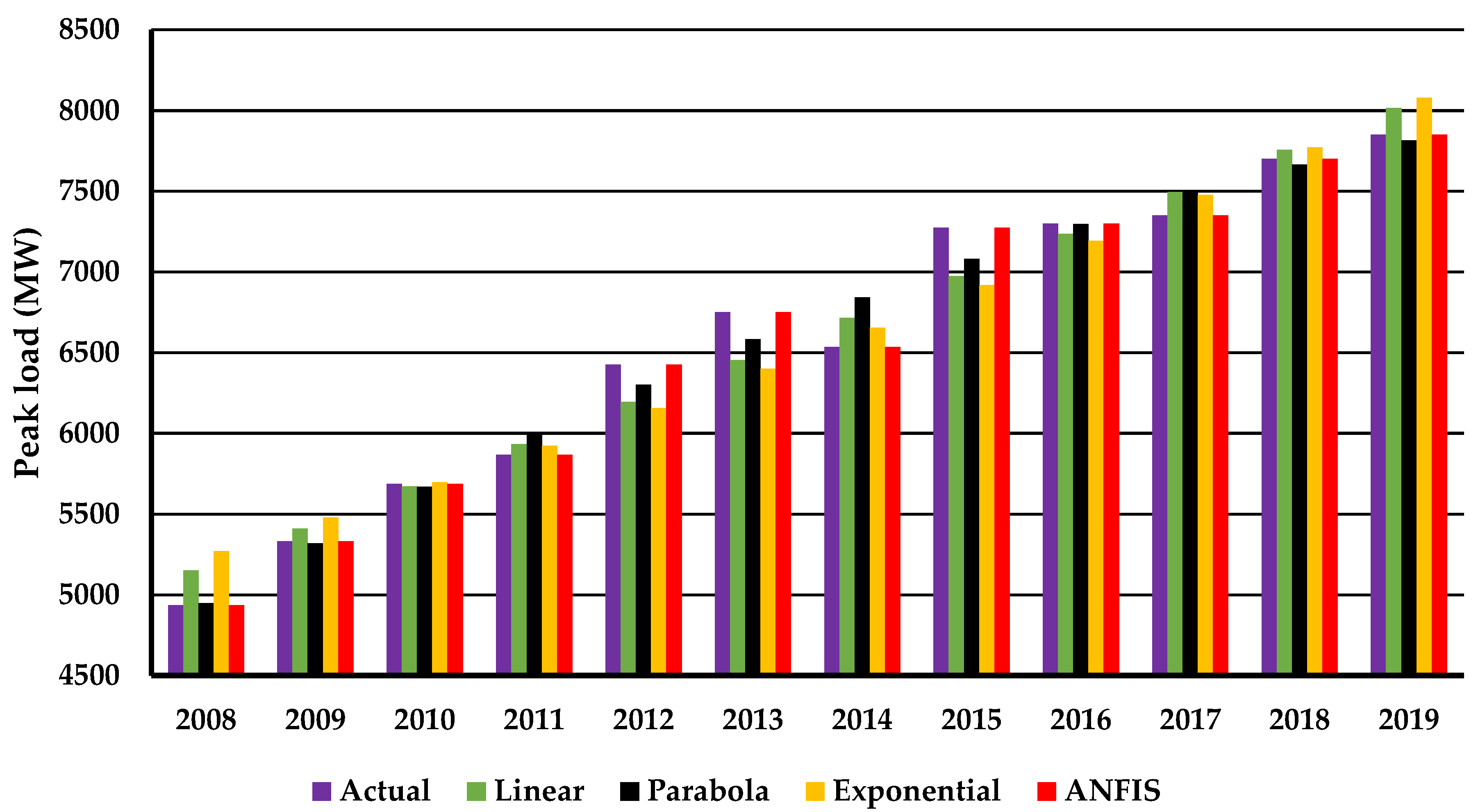

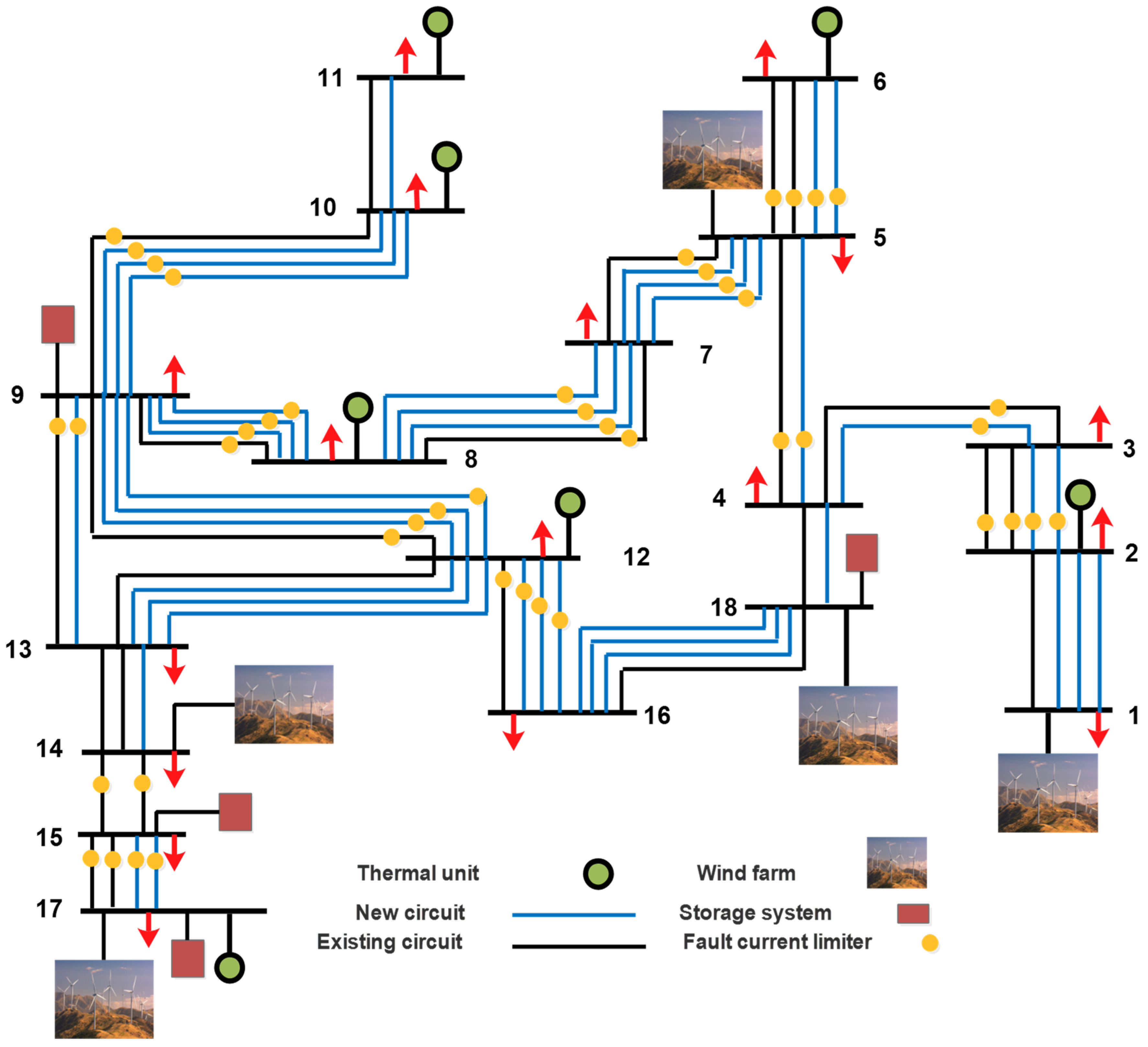
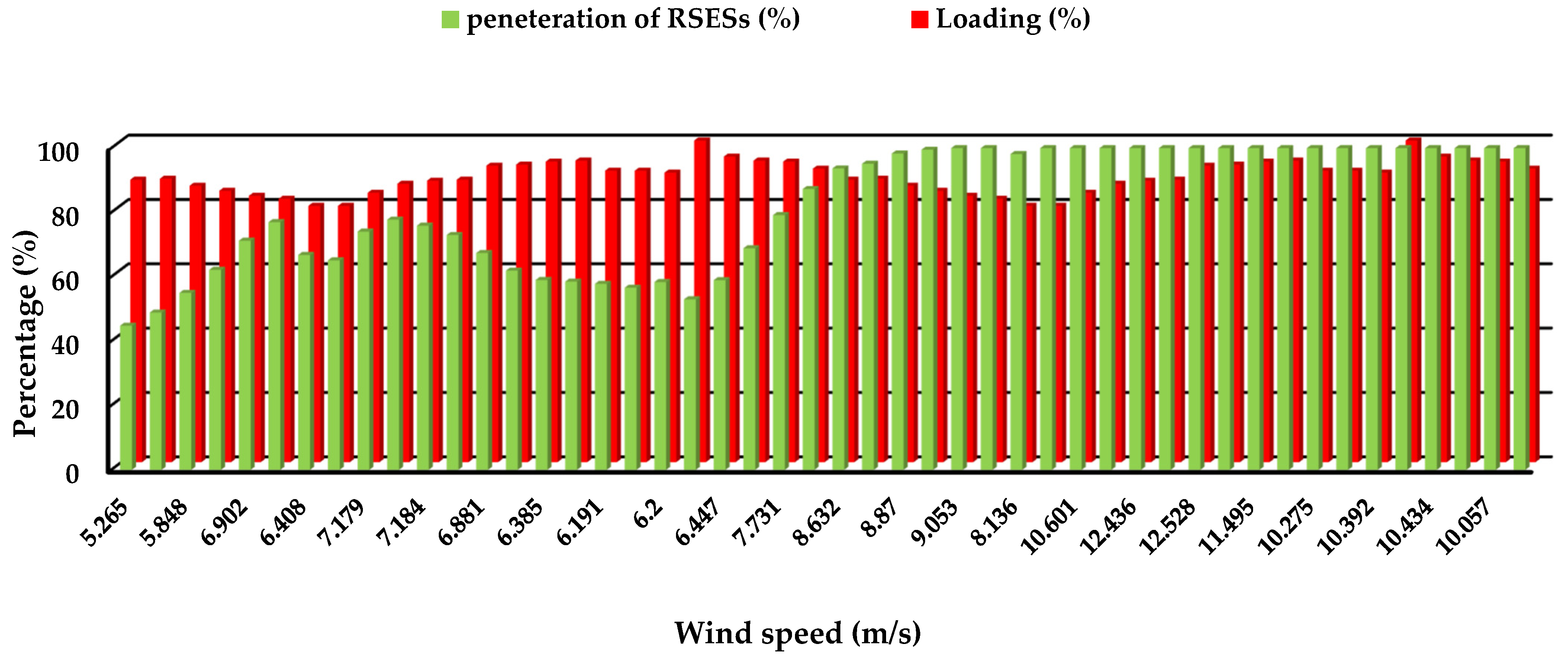
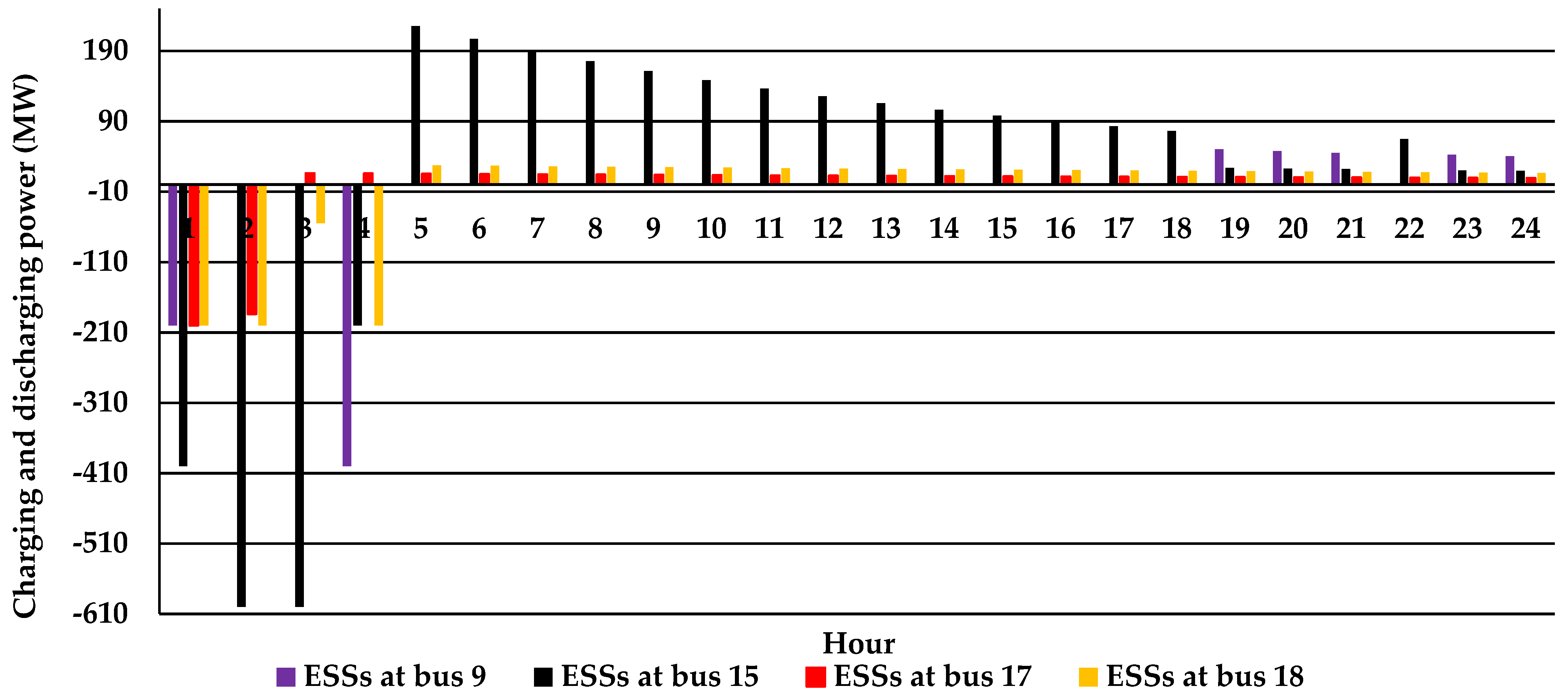
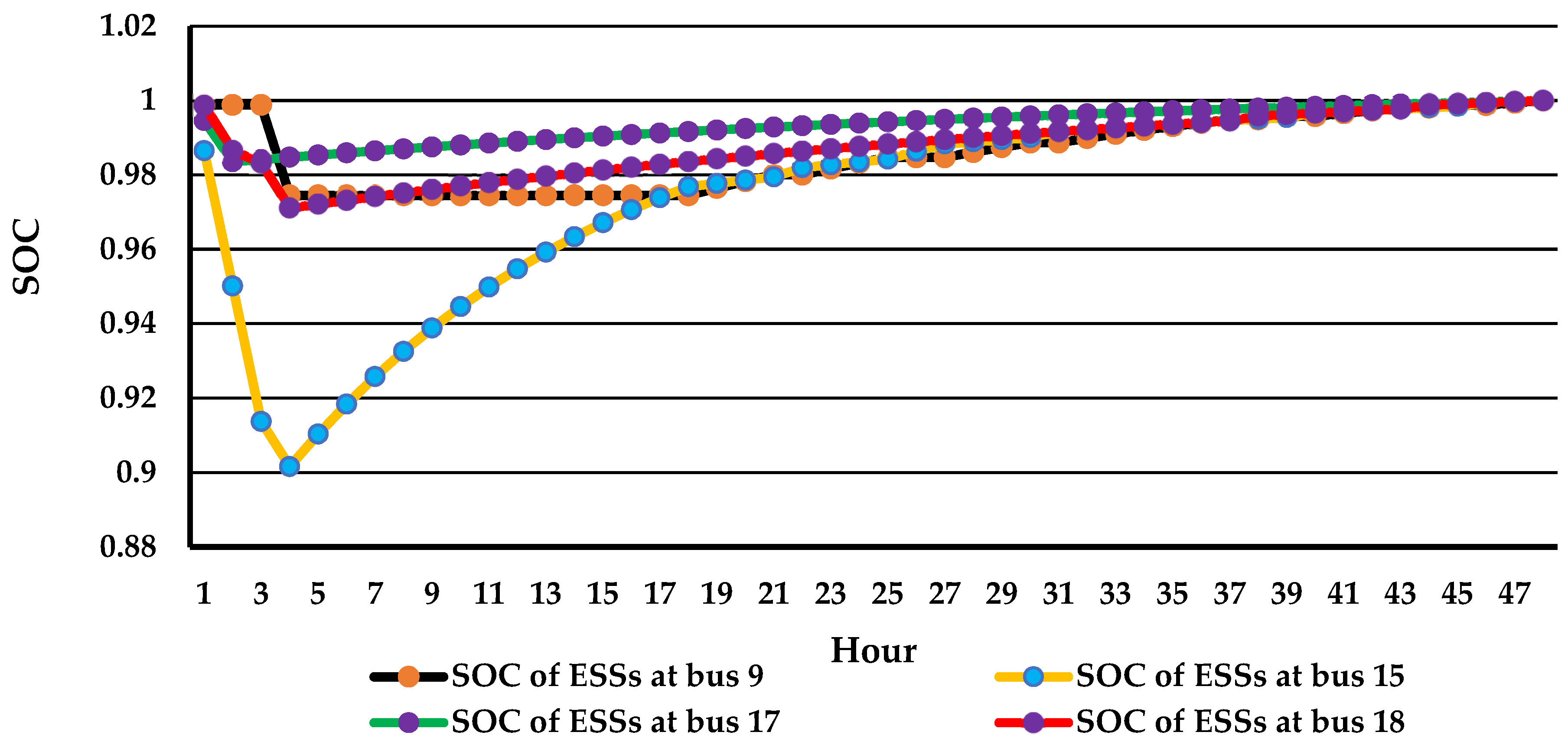

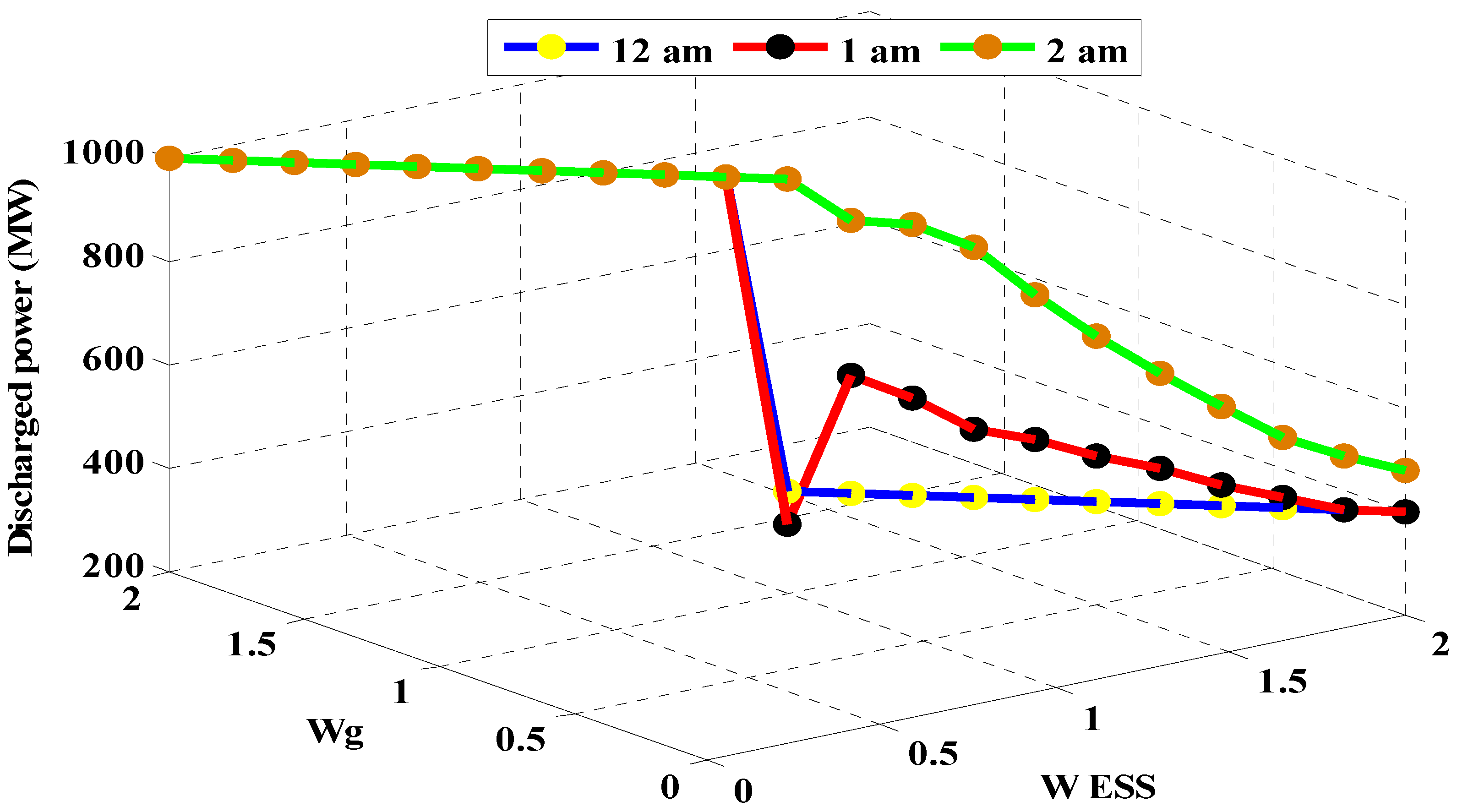
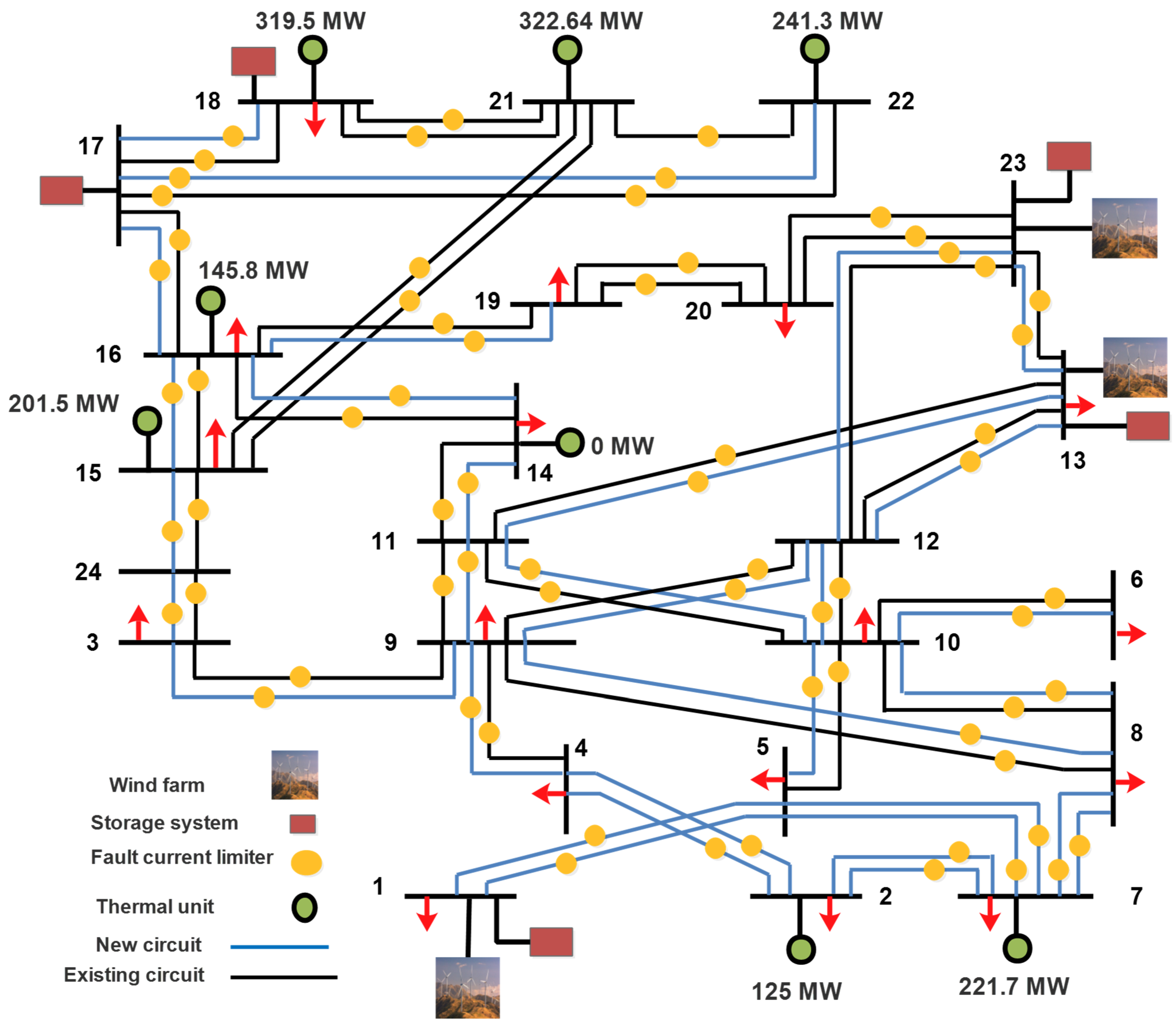
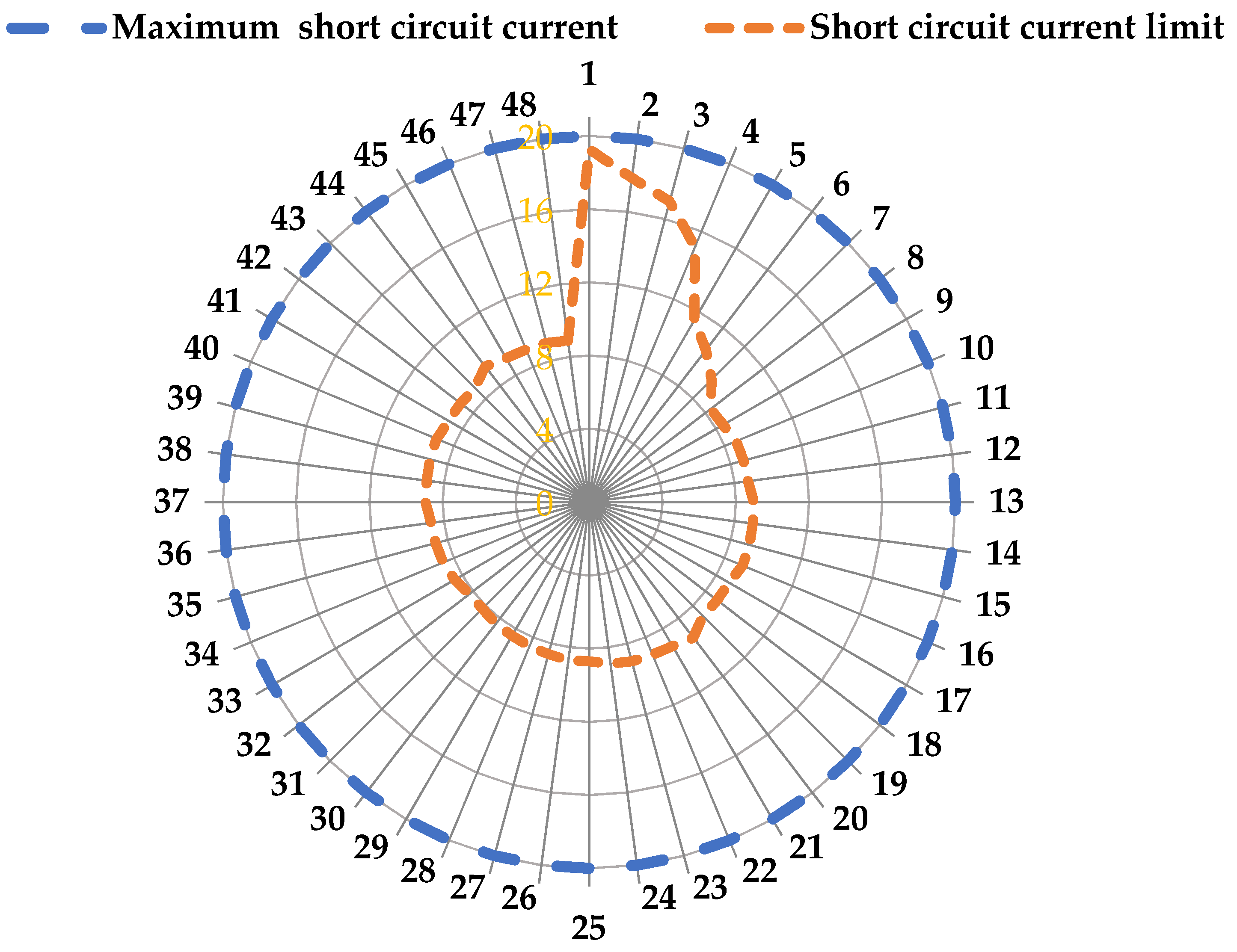

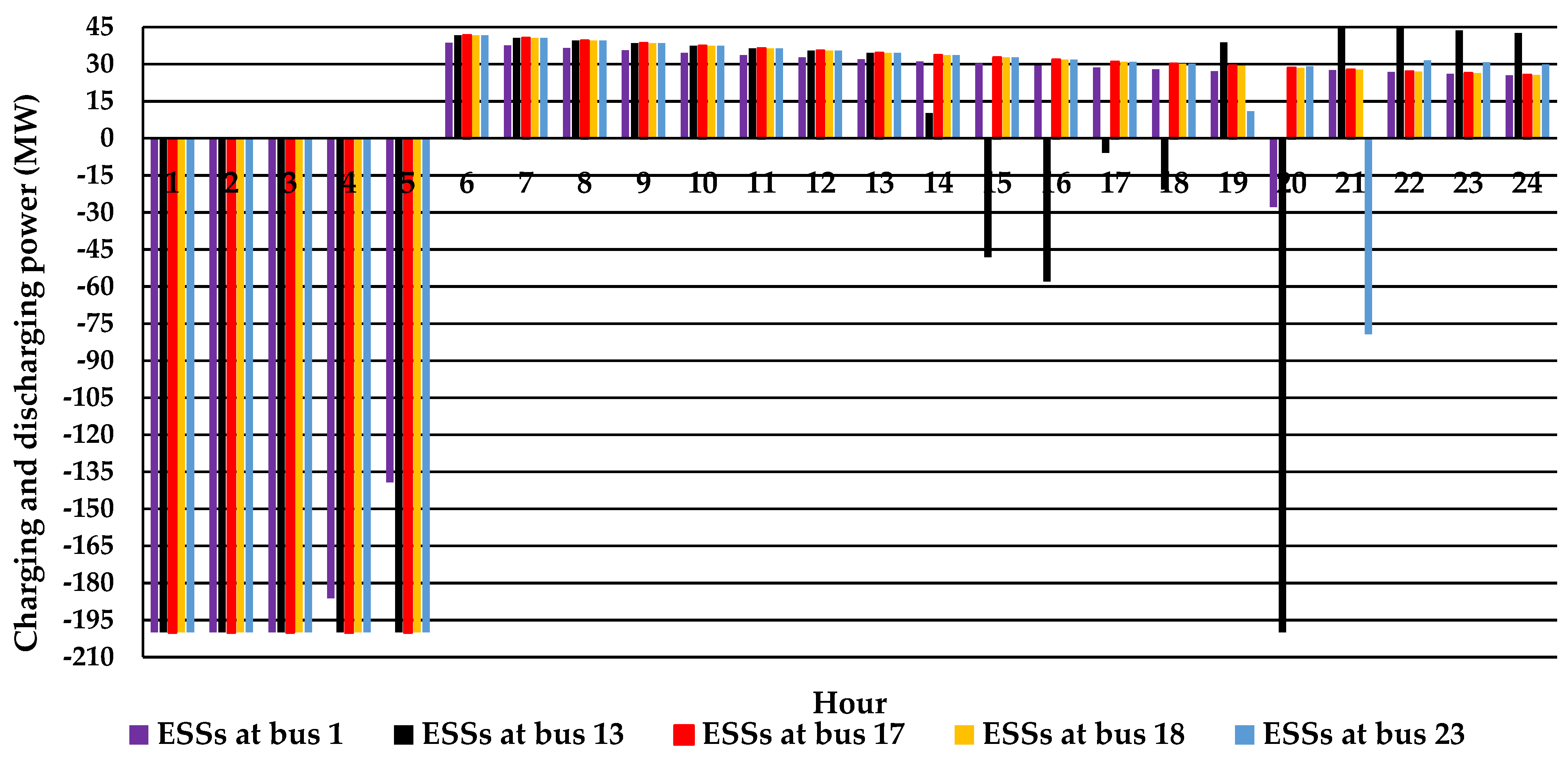


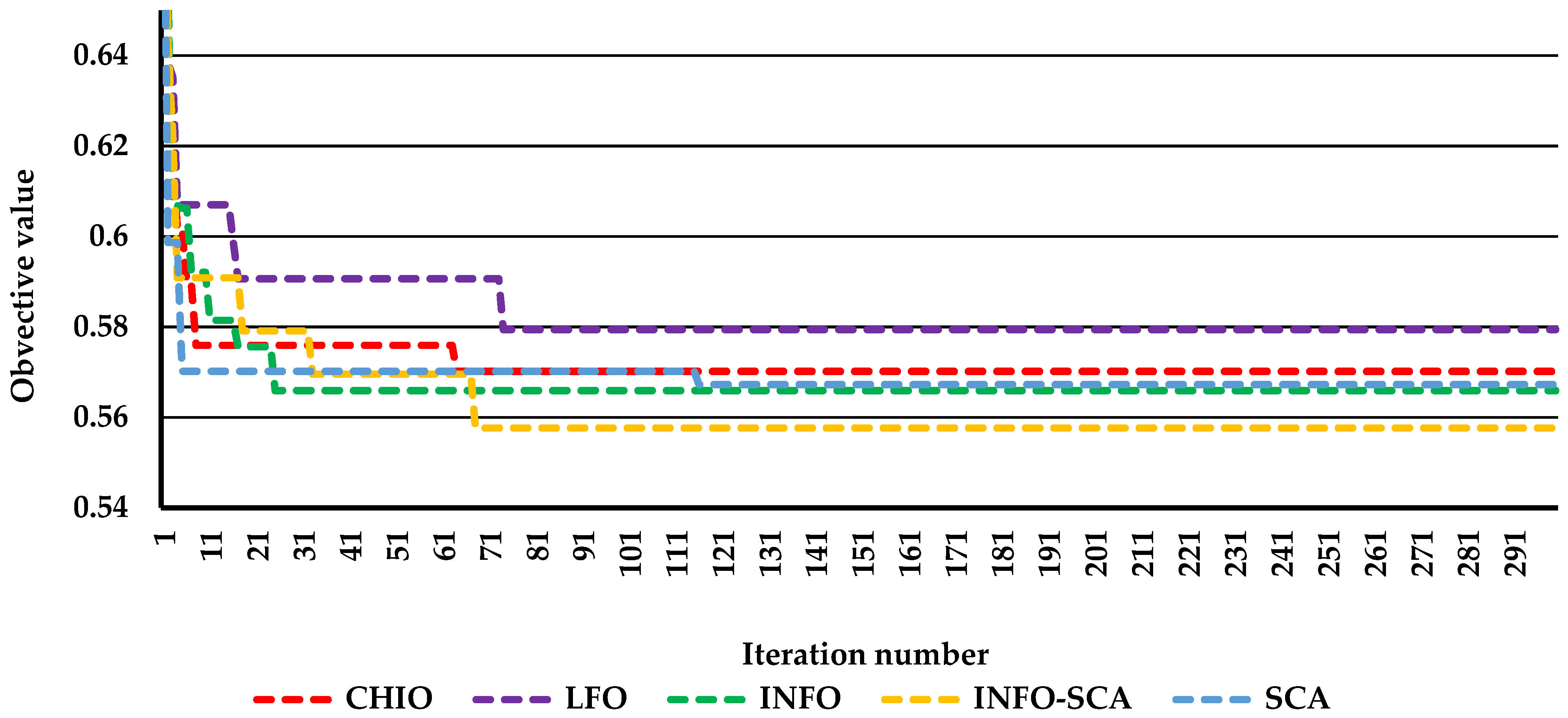
| Ref. | Planning Model | The Methodology Applied for Integration RSESs |
|---|---|---|
| Refaat et al. [3] | A stochastic PSP model considering SCC constraints and N-1 security was adopted. | Economic and technical requirements constrained the penetration level of renewable units. |
| Luburić et al. [19] | An investment model aimed to find the optimal mix of transmission lines, TCSCs, and ESS was proposed. | Renewables’ maximum level was decided before conducting the analysis. |
| Hamidpour et al. [20] | A stochastic planning strategy to coordinate GEP, TEP, and ESSs expansion planning in the presence of demand response was established. | The expansion cost of RSESs was embedded in the objective function. |
| Gan et al. [22] | A security-constrained co-planning model of TEP and ESSs with high penetration of RSESs was presented. | The risk cost due to Renewable curtailed was presented in the cost function. |
| Najjar et al. [32] | A simultaneous model for GEP and TEP that considers SCC constraints was presented. | The expansion cost of RSESs controlled the use of RSESs. |
| Zhou et al. [37] | A precise PSP method was established to evaluate the operating costs involving robust hourly transmission constrained unit commitment and economic dispatch problems. | The penetration level of renewable units hosted was restricted by the economic costs and the technical aspects. |
| Zhang et al. [39] | An innovative scenario-based model that incorporated GEP, TEP, and reactive power planning problems was formulated. | A penalty cost due to Renewable curtailed was included in the objective function. |
| Mortaz et al. [40] | A TEP model was formulated to evaluate the impact of RSESs’ penetration level on TEP’s projects. | Defined RSESs’ capacity was distributed among different numbers of buses to assess the impact of use RSESs on TEP cost and projects required. |
| Zhuo et al. [41] | A Stochastic TEP planning model was established to consider enormous scenarios without employing a reduction method. | Different RSESs’ penetration levels were suggested to evaluate the proposed methodology. |
| Akhavizadegan et al. [42] | A bi-level optimization model was designed, and a new approach was proposed to identify a small number of high-quality scenarios for TEP. | The proposed method was investigated assuming that renewable energy capacity would increase by a fixed ratio each year until the end of the planning horizon. |
| Features | INFO [43] | SCA [44] |
|---|---|---|
| Mechanism of operation | It is based on the idea of weighted means of vectors. The updating process is done in three stages: updating rule, vector combining, and a local search. | The updating process is based on sine and cosine functions to vary the candidate solutions either outwards or towards the best solutions. |
| vantages | It is efficient in solving real complex and challenging problems. It is capable of avoiding local optimums and converges fast to optimal solutions. | It is superior in solving unimodal, multi-modal, and composite test functions compared to some algorithms reported in the literature. It is recommended for solving complex engineering problems. |
| Limitations | Like any meta-heuristic technique, INFO and SCA do not guarantee the optimum solutions. Further, for both optimizers, well-defined algorithm parameters for one problem may not be suitable for solving another problem. | |
| Route | No. Circuits | FCL Size | Bus | Total Generation (MWh) | ESS (MWh) | |
|---|---|---|---|---|---|---|
| From | To | |||||
| 1 | 2 | 4 | 0 | 1 | 118,497.014 (wind) | 0 |
| 2 | 3 | 4 | 4.163 | 2 | 6083.111 (thermal) | 0 |
| 3 | 4 | 2 | 0.320 | 3 | 0 | 0 |
| 4 | 5 | 2 | 6.008 | 4 | 0 | 0 |
| 5 | 6 | 4 | 3.188 | 5 | 200,633.784 (wind) | 0 |
| 5 | 7 | 4 | 0.426 | 6 | 18,031.351 (thermal) | 0 |
| 7 | 8 | 4 | 6.112 | 7 | 0 | 0 |
| 8 | 9 | 4 | 5.938 | 8 | 16,489.200 (thermal) | 0 |
| 9 | 10 | 4 | 6.032 | 9 | 0 | 3055.556 |
| 10 | 11 | 2 | 0 | 10 | 7344.435 (thermal) | 0 |
| 9 | 13 | 2 | 3.099 | 11 | 5698.079 (thermal) | 0 |
| 12 | 9 | 4 | 6.040 | 12 | 155,561.912 (thermal) | 0 |
| 12 | 13 | 4 | 0 | 13 | 0 | 0 |
| 13 | 14 | 3 | 0 | 14 | 189,688.367 (wind) | 0 |
| 14 | 15 | 2 | 6.040 | 15 | 0 | 8611.111 |
| 17 | 15 | 4 | 6.038 | 16 | 0 | 0 |
| 12 | 16 | 4 | 6.040 | 17 | 245,539.772 (wind, thermal) | 2108.467 |
| 16 | 18 | 4 | 0 | 18 | 200,686.896 (wind) | 3687.427 |
| 4 | 18 | 2 | 0 | |||
| Route | No. Circuits | FCL Size | Bus | Total Generation (MWh) | ESS (MWh) | |
|---|---|---|---|---|---|---|
| From | To | |||||
| 1 | 2 | 0 | 0.278 | 1 | 17,648.471 (wind) | 1323.906 |
| 1 | 3 | 0 | 4.224 | 2 | 7315.6251 (thermal) | 0 |
| 1 | 5 | 2 | 1.690 | 3 | 0 | 0 |
| 2 | 4 | 2 | 2.534 | 4 | 0 | 0 |
| 2 | 6 | 0 | 3.840 | 5 | 0 | 0 |
| 3 | 9 | 2 | 2.380 | 6 | 0 | 0 |
| 3 | 24 | 2 | 1.678 | 7 | 7284.6921 (thermal) | 0 |
| 4 | 9 | 2 | 2.074 | 8 | 0 | 0 |
| 5 | 10 | 2 | 1.766 | 9 | 0 | 0 |
| 6 | 10 | 2 | 1.210 | 10 | 0 | 0 |
| 7 | 2 | 2 | 0.278 | 11 | 0 | 0 |
| 7 | 4 | 0 | 4.224 | 12 | 0 | 0 |
| 7 | 5 | 2 | 2.534 | 13 | 20,111.154 (wind) | 1850.813 |
| 7 | 8 | 2 | 1.228 | 14 | 0 | 0 |
| 8 | 9 | 2 | 3.302 | 15 | 9841.098 (thermal) | 0 |
| 8 | 10 | 2 | 3.302 | 16 | 3396.190 (thermal) | 0 |
| 9 | 11 | 2 | 1.678 | 17 | 0 | 1388.888 |
| 9 | 12 | 2 | 1.678 | 18 | 12,747.406 (thermal) | 1388.888 |
| 10 | 11 | 2 | 1.678 | 19 | 0 | 0 |
| 10 | 12 | 2 | 1.678 | 20 | 0 | 0 |
| 11 | 13 | 2 | 0.952 | 21 | 17,696.942 (thermal) | 0 |
| 11 | 14 | 2 | 0.836 | 22 | 5573.306 (thermal) | 0 |
| 12 | 13 | 2 | 0.952 | 23 | 20,111.154 (wind) | 1498.999 |
| 12 | 23 | 1 | 1.932 | 24 | 0 | 0 |
| 13 | 23 | 1 | 1.730 | NA * | ||
| 14 | 16 | 2 | 0.778 | |||
| 15 | 16 | 2 | 0.346 | |||
| 15 | 21 | 2 | 0.980 | |||
| 15 | 24 | 2 | 1.038 | |||
| 16 | 17 | 2 | 0.518 | |||
| 16 | 19 | 2 | 0.462 | |||
| 17 | 18 | 2 | 0.288 | |||
| 17 | 22 | 2 | 2.106 | |||
| 18 | 21 | 2 | 0.518 | |||
| 19 | 20 | 2 | 0.792 | |||
| 20 | 23 | 2 | 0.432 | |||
| 21 | 22 | 1 | 1.356 | |||
| Facility | Capital Cost Factor | Operating Cost Factor | |
|---|---|---|---|
| Fixed (×106 $/MW) | Variable (×106 $/MW) | ||
| Wind unit | 0.139 × 106 $/MW | 0.232 | 0 |
| Thermal units | 0.536 × 106 $/MW | 0.123 | 0.144 |
| FCL | 0.51 × 106 $/p.u | NA | NA |
| ESS | 0.528 × 106 $/MW | 0.0046 | 0.0001 |
| circuits | Adapted from [27,52] | NA | NA |
| Algorithm | Objective Value | Trun (s) | |
|---|---|---|---|
| Best | Worst | ||
| INFO-SCA | 0.421957 | 0.445141 | 400.38 |
| INFO | 0.430142 | 0.45530 | 370.24 |
| SCA | 0.430912 | 0.45521 | 362.15 |
| CHIO | 0.439621 | 0.46301 | 453.32 |
| LFO | 0.444512 | 0.463221 | 443.05 |
| Algorithm | Objective Value | Trun (s) | |
|---|---|---|---|
| Best | Worst | ||
| INFO-SCA | 0.557634 | 0.58053 | 805.35 |
| INFO | 0.565905 | 0.58432 | 781.02 |
| SCA | 0.567239 | 0.5902 | 770.54 |
| CHIO | 0.570144 | 0.5885 | 844.41 |
| LFO | 0.579398 | 0.5902 | 823.62 |
Publisher’s Note: MDPI stays neutral with regard to jurisdictional claims in published maps and institutional affiliations. |
© 2022 by the authors. Licensee MDPI, Basel, Switzerland. This article is an open access article distributed under the terms and conditions of the Creative Commons Attribution (CC BY) license (https://creativecommons.org/licenses/by/4.0/).
Share and Cite
Almalaq, A.; Alqunun, K.; Refaat, M.M.; Farah, A.; Benabdallah, F.; Ali, Z.M.; Aleem, S.H.E.A. Towards Increasing Hosting Capacity of Modern Power Systems through Generation and Transmission Expansion Planning. Sustainability 2022, 14, 2998. https://doi.org/10.3390/su14052998
Almalaq A, Alqunun K, Refaat MM, Farah A, Benabdallah F, Ali ZM, Aleem SHEA. Towards Increasing Hosting Capacity of Modern Power Systems through Generation and Transmission Expansion Planning. Sustainability. 2022; 14(5):2998. https://doi.org/10.3390/su14052998
Chicago/Turabian StyleAlmalaq, Abdulaziz, Khalid Alqunun, Mohamed M. Refaat, Anouar Farah, Fares Benabdallah, Ziad M. Ali, and Shady H. E. Abdel Aleem. 2022. "Towards Increasing Hosting Capacity of Modern Power Systems through Generation and Transmission Expansion Planning" Sustainability 14, no. 5: 2998. https://doi.org/10.3390/su14052998
APA StyleAlmalaq, A., Alqunun, K., Refaat, M. M., Farah, A., Benabdallah, F., Ali, Z. M., & Aleem, S. H. E. A. (2022). Towards Increasing Hosting Capacity of Modern Power Systems through Generation and Transmission Expansion Planning. Sustainability, 14(5), 2998. https://doi.org/10.3390/su14052998








